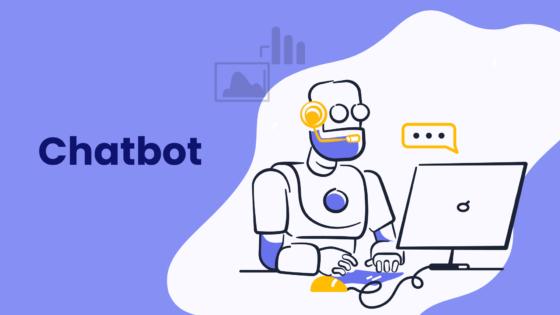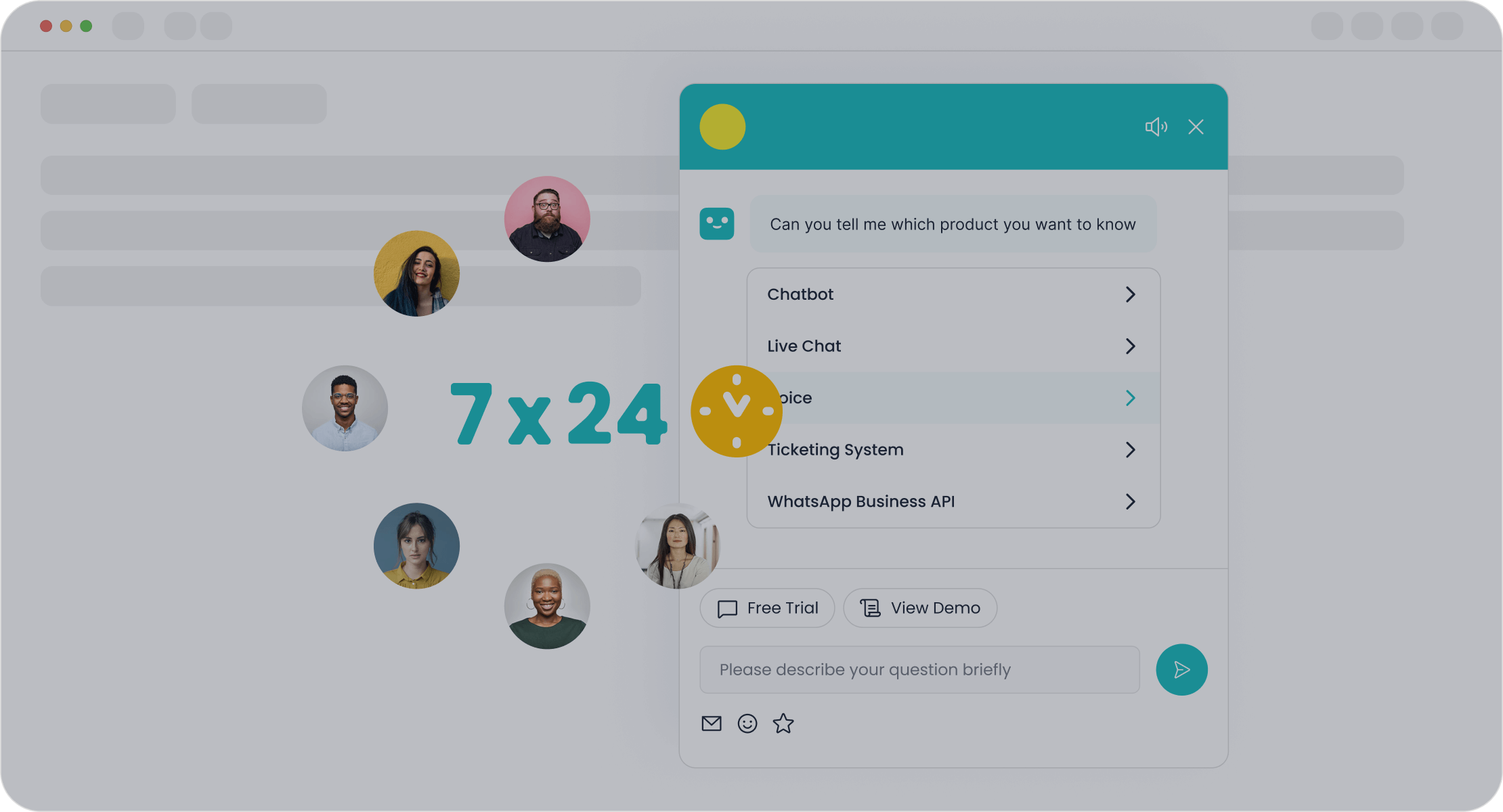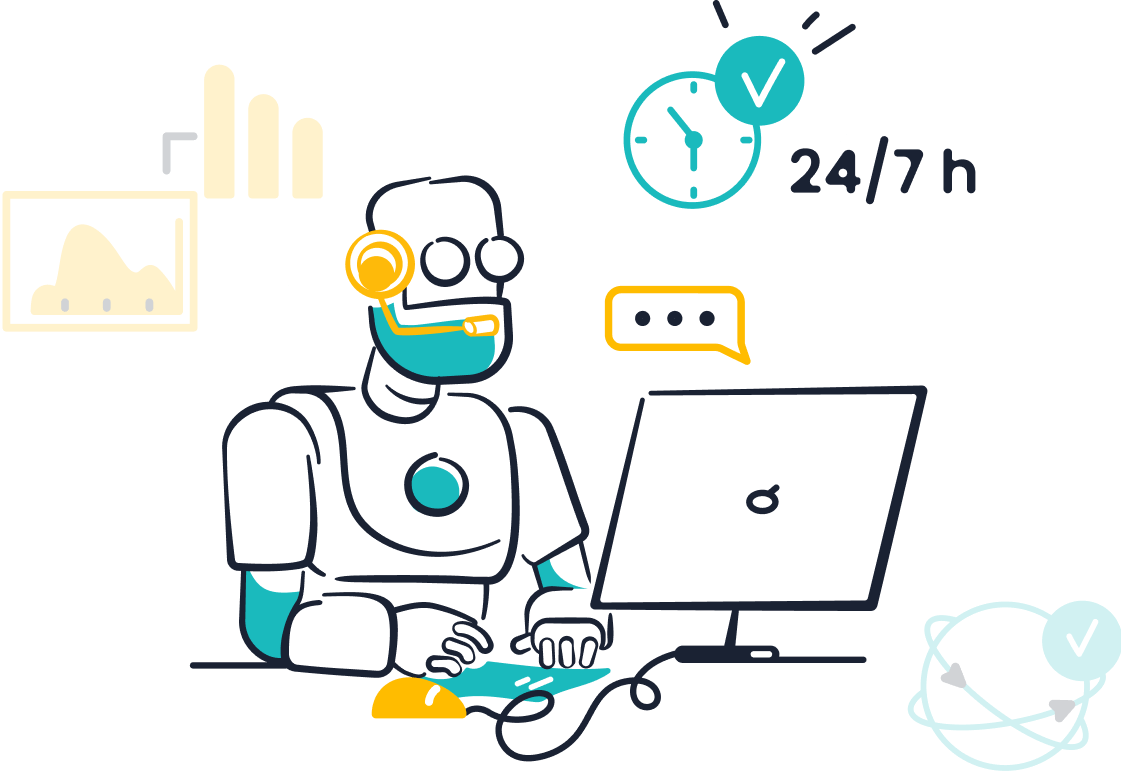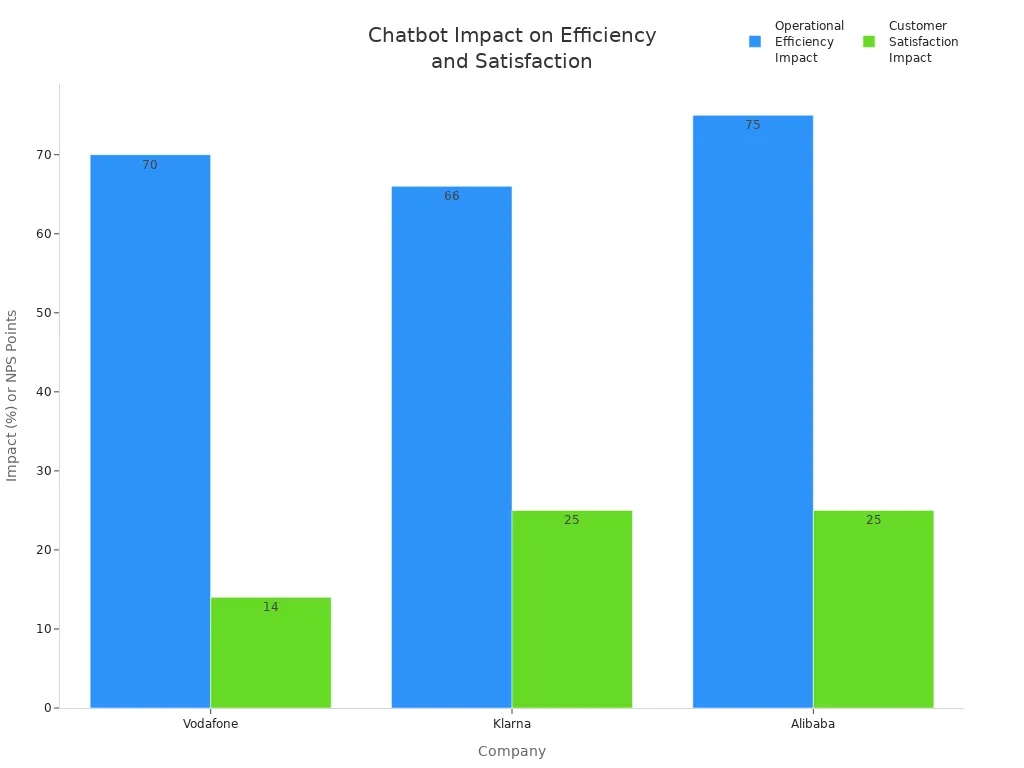Latest Trends in Chatbot Technology and the Advantage and Disadvantage of Chatbots

AI chatbot technology is transforming customer service and ecommerce. The latest trends show that voice-enabled chatbots, hyper-personalized support, and advanced AI models now drive faster, more accurate responses. Over 80% of customer interactions will involve chatbots by 2025, and AI is set to handle 95% of support tasks. Sobot and Sobot AI deliver these innovations, helping businesses boost service efficiency and growth. The main advantage and disadvantage of chatbots often centers on 24/7 availability versus handling complex queries. With the chatbot market expected to grow from $7.76 billion in 2024 to $9.56 billion in 2025, companies must adapt to stay ahead.
| Metric | Value |
|---|---|
| Market Size (2024) | USD 7.76 billion |
| Market Size (2025, projected) | USD 9.56 billion |
| CAGR (2025-2030) | 23.3% |
| Market Size (2030, projected) | USD 27.29 billion |
AI Trends for 2025

The ai trends for 2025 reveal key trends shaping the future of chatbot technology. Businesses now rely on advanced ai integration, conversational ai, and voice assistants to deliver hyper-personalized customer journeys. The table below compares recent developments with earlier years, showing how nlp and conversational ai have evolved.
| Trend Category | 2022 Highlights | 2025 Forecast and Evolution |
|---|---|---|
| Natural Language Processing (NLP) | Multi-turn conversations, improved sentiment detection | Human-like understanding, accurate sentiment detection, less need for human handoff |
| Voice Assistants | More users, better speech recognition | Broader integration, enhanced speech synthesis, expanded use in payments |
| E-commerce and Customer Service | Basic personalization, 24/7 support | Generative ai for personalized responses, improved sales and satisfaction |
| Chatbot-Driven Payments | Early adoption | Significant growth, robust payment integrations |
| Machine Learning Techniques | Personalization and ad targeting | Continued refinement in chatbot intelligence and personalization |
NLP and Conversational AI
Nlp and conversational ai now power chatbots with advanced natural language understanding. These systems interpret user intent, sentiment, and context, leading to more accurate response generation. Chatbots use machine learning to learn from each interaction, improving over time. Sobot’s chatbot leverages these technologies to automate customer interactions, providing instant, human-like replies. Real-world applications include healthcare scheduling, ecommerce recommendations, and customer support. Enhanced personalization and user context memory allow chatbots to maintain conversation flow and deliver relevant responses.
Voice and Multimodal Chatbots
Voice assistants and multimodal chatbots are transforming customer interactions. Retail, hospitality, and banking industries use voice assistants for hands-free service, faster query resolution, and 24/7 support. For example, Sobot’s omnichannel chatbot integrates with platforms like WhatsApp and SMS, enabling seamless voice and text communication. Voice assistants improve accessibility and reduce operational costs by automating routine tasks. These trends support enhanced personalization and faster response times across industries (source).
Hyper-Personalization
Hyper-personalized customer journeys are a top priority in ai trends for 2025. Chatbots now analyze purchase history, preferences, and behavior to deliver tailored recommendations. Predictive analytics and machine learning increase conversion rates by up to 30%. Sobot’s chatbot uses advanced ai integration to create dynamic, personalized experiences, boosting customer engagement and sales. Enhanced personalization leads to higher satisfaction, as 80% of customers expect seamless, individualized service across channels.
Multilingual Support
Global businesses demand chatbots with multilingual support to reach diverse markets. Leading platforms now offer support for dozens or even hundreds of languages. Multilingual chatbots improve customer satisfaction by providing instant, culturally-aware responses in native languages. Sobot’s chatbot supports multiple languages, enabling businesses to deliver unified service worldwide. This trend helps companies scale operations and enhance customer interactions across regions.
Ethical and Explainable AI
Ethical and explainable ai is one of the key trends shaping the future of chatbot technology. Companies address concerns like bias, data privacy, and transparency by adopting responsible ai frameworks. They maintain human oversight and use techniques to explain ai decisions. Sobot follows best practices for ethical ai, ensuring fairness and accountability in customer interactions. Regulatory guidelines require transparency, regular audits, and privacy protection, making ethical ai essential for trust and compliance.

Sobot Chatbot for Businesses
Omnichannel Integration
Sobot’s chatbot platform gives businesses the power to connect with customers across many channels. Customers can start a conversation on one platform and continue on another without losing any information. This seamless experience helps reduce customer effort by up to 25% and increases satisfaction by 10%. Companies can use the chatbot on WhatsApp, SMS, email, and social media. The chatbot also integrates with CRM systems, so agents see all customer data in one place. This approach ensures fast, personalized support and keeps service quality high, even when handling thousands of queries at once.
Automation and Efficiency
Sobot’s ai-powered tools bring intelligent automation to daily business tasks. The chatbot answers common questions instantly, creates tickets, and routes complex issues to human agents. Businesses see big improvements in efficiency after using advanced chatbots. For example:
| Business Area | Efficiency Gains | Examples |
|---|---|---|
| Customer Support | 24/7 instant responses, reduced wait times | Chatbots automate FAQs and ticket creation, lowering agent workload. |
| Sales and Lead Nurturing | Faster lead qualification, increased conversion | Chatbots engage visitors, qualify leads, and schedule appointments. |
| Operational Efficiency | Automation of repetitive tasks, cost savings | Chatbots free employees for higher-value work and reduce the need for large teams. |
These ai-powered tools help companies cut costs, reduce errors, and focus on growth.
Customization and No-Code Setup
Sobot’s chatbot platform offers a no-code setup, making it easy for anyone to build and customize advanced chatbots. Users do not need programming skills. The drag-and-drop interface lets teams design workflows and connect conversation steps visually. Pre-built templates help businesses launch ai chatbot for businesses quickly. Customization options allow companies to match the chatbot’s responses and look to their brand. Integration with tools like Shopify and WooCommerce automates order tracking and payment processing. Continuous learning and analytics help improve chatbot performance over time.
Real-World Success (OPPO Case)
OPPO, a global smart device leader, used Sobot’s ai chatbot for businesses to transform customer service. The company automated about 70% of routine inquiries, freeing agents for complex issues. OPPO saw a 25% drop in customer churn and a 20% rise in engagement. Personalized support and proactive recommendations boosted loyalty and revenue growth. Automation also cut service costs and improved response times by up to 90%. This real-world example shows how advanced chatbots and conversational ai drive business success and long-term growth.
Advantage and Disadvantage of Chatbots

Key Advantages
Businesses today rely on chatbots for many reasons. The most important advantage and disadvantage of chatbots often centers on their ability to provide 24/7 support capabilities and handle large volumes of customer requests. Chatbots never sleep. They answer questions at any hour, so customers always get help, even outside regular business hours. This means no customer or lead gets missed. Companies like LATAM Airlines reduced response times by 90% and resolved 80% of inquiries without human help, which led to higher customer satisfaction.
Other key advantages include:
- Lower costs: Chatbots automate routine tasks, so companies need fewer agents. This saves money.
- Scalability: Chatbots handle thousands of conversations at once, which is helpful during busy times.
- Improved response times: Customers get answers right away, which boosts satisfaction.
- Consistency: Chatbots give the same accurate response every time, reducing errors.
A table below shows how leading companies benefit from chatbots:
| Company | Operational Efficiency Impact | Customer Satisfaction Impact | Additional Notes |
|---|---|---|---|
| Vodafone | 70% cost-per-chat reduction; 70% of inquiries resolved by AI | NPS up by 14 points | Handles billing and tech support for 600+ million users |
| Klarna | Chatbot equals 700 agents; $40M profit improvement | Satisfaction matches or beats humans | 24/7 service in 23 markets, 35+ languages |
| Alibaba | 75% of queries handled by AI; saves ~$150M/year | 25% higher satisfaction | Manages 2M+ sessions/day, 40% hotline calls |

Sobot’s AI chatbot brings these benefits to businesses in retail, finance, and more. It helps companies like OPPO automate support, cut costs, and boost customer loyalty.
Common Disadvantages
While the advantage and disadvantage of chatbots are clear, some challenges remain. Many chatbots struggle with complex queries. Their knowledge base is limited, so they cannot always solve unique or difficult problems. Customers sometimes feel frustrated when a chatbot cannot understand their needs or emotions. In fact, 75% of customers say chatbots fail to answer complex questions, and 61% prefer talking to a human for better understanding.
Other common disadvantages include:
- Lack of empathy: Chatbots cannot sense emotions or respond with empathy, which can make interactions feel cold.
- Impersonal experience: Many users feel chatbots do not personalize responses enough, leading to lower satisfaction.
- Integration issues: Setting up and maintaining chatbots can be hard, especially when connecting to other business systems.
- Risk of incorrect information: Sometimes, chatbots give wrong answers, which can harm trust.
Note: 80% of users report increased frustration after a poor chatbot interaction, and 76% feel annoyed by lack of personalization.
These disadvantages show why some customers still prefer human agents, especially for sensitive or complicated issues.
Overcoming Challenges
Companies can overcome the disadvantage of chatbots by using smart strategies. The most effective methods include:
- Continuous monitoring: Businesses use tools to check chatbot health and fix problems quickly.
- Regular training: Updating the chatbot’s knowledge base helps it give better answers over time.
- Advanced NLP: Using strong natural language processing improves understanding and response accuracy.
- User-friendly design: Clear instructions and simple interfaces make chatbots easier to use.
- Phased rollout: Companies start with basic tasks and expand chatbot skills step by step.
Sobot’s chatbot platform uses these best practices. It offers continuous optimization, multilingual support, and easy integration. This helps businesses get the most from their chatbot while reducing common problems.
Tip: Setting realistic goals and gathering user feedback helps improve chatbot performance and customer trust.
The advantage and disadvantage of chatbots will continue to shape how businesses use AI for customer service. By focusing on these strategies, companies can maximize the benefits and minimize the drawbacks.
Future of Chatbots in Business
AI Chatbot for Businesses
The future of chatbots will bring major changes to how companies operate. Businesses will use ai chatbot for businesses to handle more complex, multi-turn conversations. These chatbots will become highly personalized and context-aware. They will remember past interactions and adjust their responses to fit each customer. Companies like Urban Company and ABN AMRO Bank already use chatbots to resolve up to 90% of queries and automate over half of customer interactions. This shift frees human agents to focus on tasks that need emotional intelligence or special skills. The future of chatbots will also see more voice-activated and multilingual chatbots, making it easier for companies to serve global customers. Sobot’s AI chatbot for businesses already supports multiple languages and channels, helping brands like OPPO improve customer satisfaction and efficiency.
The key trends shaping the future include chatbots that can predict customer needs, automate workflows, and provide instant, accurate answers.
Omnichannel and Automation
Omnichannel support and automation will define the future of chatbots. Companies will connect with customers across chat, voice, email, and social media, creating a seamless experience. Recent advancements allow chatbots to use unified customer data, so every interaction feels personal. Automation now goes beyond customer service. Chatbots can schedule appointments, send reminders, and generate business insights. Businesses using these tools report up to 78% higher conversion rates and a 31% lift in sales through AI-optimized outreach. Sobot’s platform offers omnichannel integration and smart automation, helping companies keep up with market growth projections and changing customer needs.
| Feature | Benefit |
|---|---|
| Omnichannel Support | Consistent experience across all platforms |
| Automation | Faster service, reduced manual work |
| Personalization | Higher engagement and satisfaction |
Data Privacy and Compliance
Data privacy and compliance will remain a top concern in the future of chatbots. Companies must manage user consent, protect data, and follow rules like GDPR and CCPA. Risks include data breaches and fines, as seen in past incidents with major brands. Leading providers use strong encryption, clear consent options, and regular audits to keep data safe. Sobot’s solutions follow privacy-by-design principles and support encrypted backups. This approach builds trust and helps companies meet legal requirements while using chatbots to grow their market.
Compliance not only avoids fines but also builds user trust and supports ethical AI deployment.
Best Practices for Chatbot Success
Aligning with Customer Needs
Successful chatbot deployment starts with understanding what customers want. Companies should introduce the chatbot as an AI agent and set clear expectations about its abilities. This builds trust from the first interaction. Businesses can improve customer interactions by offering easy ways to reach a human agent when the chatbot cannot solve a problem. Using conversational AI features like typing indicators or message delays helps make conversations feel more natural. Customizing the chatbot’s look to match the brand also creates a seamless experience. Sobot’s platform allows businesses to design chatbots that fit their brand and integrate with existing systems, such as CRM tools. Training the chatbot with real customer data ensures it can answer common questions accurately. Companies should monitor performance and use analytics to adjust the chatbot based on user feedback and engagement rates.
Tip: Simplify choices for users by using clear buttons and limiting options. This keeps customer interactions smooth and engaging.
Human-AI Collaboration
Combining human agents with conversational AI leads to better service. Businesses should define clear roles for chatbots and humans. When a chatbot faces a complex issue, it should hand off the conversation to a human agent without losing context. Sobot’s solution supports seamless transitions, making sure customers do not repeat themselves. Training support teams on chatbot capabilities helps agents work alongside AI more effectively. Regular feedback from both customers and agents improves the system. Using analytics and performance tracking, companies can see where chatbots excel and where humans add value. This teamwork boosts customer satisfaction and efficiency.
Continuous Optimization
Continuous improvement is key for chatbot success. Companies should use analytics to track important metrics like response time, fallback rate, and customer satisfaction. Data collection and analytics help identify where users drop off or get frustrated. Businesses can use A/B testing to try different conversation flows and see what works best. Sobot’s platform offers advanced analytics and performance tracking, making it easy to monitor chatbot effectiveness. Regularly updating the chatbot’s knowledge base and retraining its conversational AI models ensures it stays accurate and helpful. Personalizing user journeys based on analytics insights increases satisfaction and engagement.
Note: Regular reviews and updates keep the chatbot aligned with business goals and customer needs.
The latest trends show that chatbot technology will keep changing customer service and ecommerce. Chatbots give 24/7 support and help companies save money, but they sometimes struggle with complex questions. Sobot helps businesses use these trends to improve service and grow faster. Experts expect the chatbot market to reach $27.29 billion by 2030 (source). Companies can use Sobot to stay ahead and meet new customer needs.
FAQ
What is the main advantage and disadvantage of chatbots?
The main advantage of chatbots is 24/7 support for customers. The main disadvantage is difficulty with complex or emotional queries. Sobot’s AI chatbot for businesses helps companies balance these strengths and weaknesses.
How does Sobot’s AI chatbot for businesses improve efficiency?
Sobot’s AI chatbot for businesses automates regular queries and supports agents. Companies using Sobot report up to 70% higher productivity and 50% lower support costs. The chatbot works across channels like WhatsApp and SMS.
Can chatbots handle multiple languages?
Yes. Modern chatbots, including Sobot’s AI chatbot for businesses, support multilingual conversations. This feature helps global companies serve customers in their native language, improving satisfaction and expanding market reach.
How can businesses overcome the disadvantage of chatbots?
Businesses can update chatbot knowledge bases, use advanced NLP, and monitor performance. Sobot’s platform offers continuous optimization and easy integration, helping companies reduce errors and improve customer experience.
See Also
Key Advantages Of Using Chatbots On Websites
How To Select The Ideal Chatbot Software Easily
Ten Reasons To Integrate Chatbots Into Your Site
